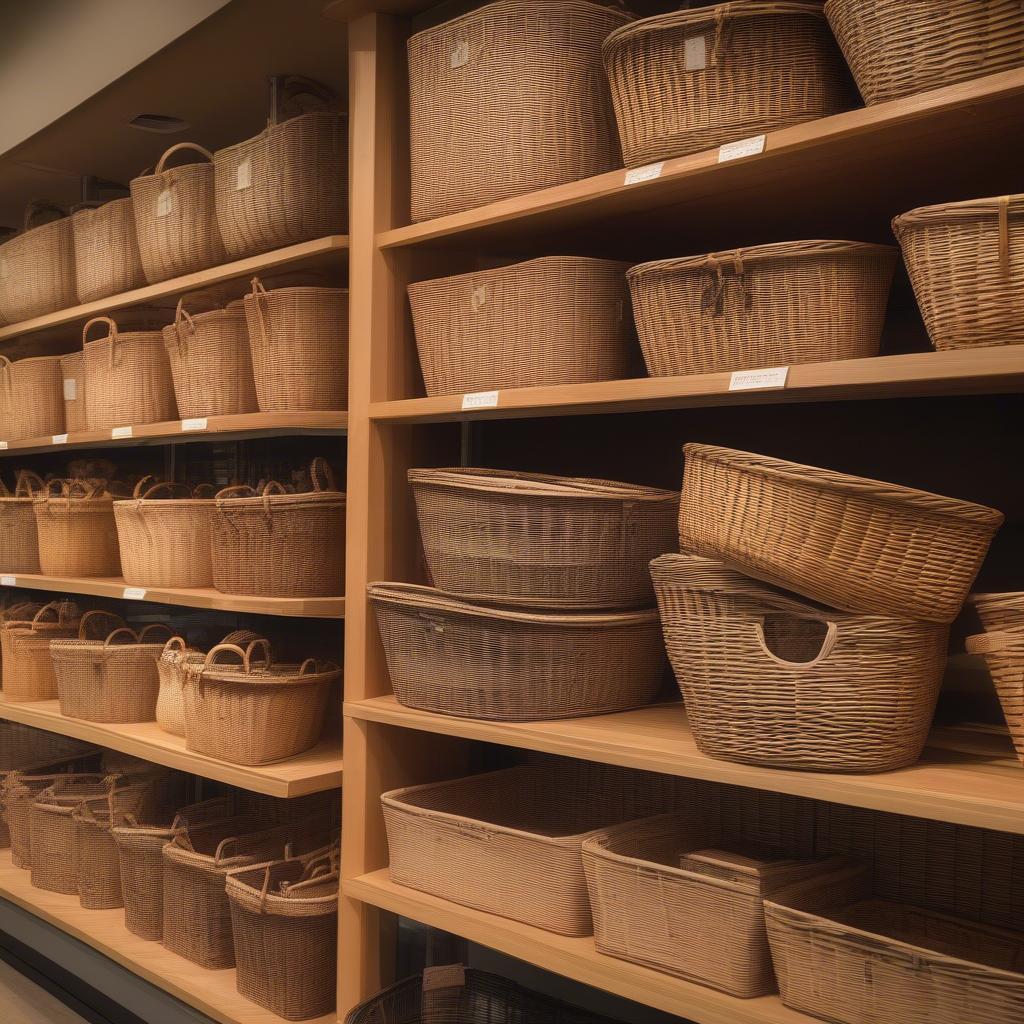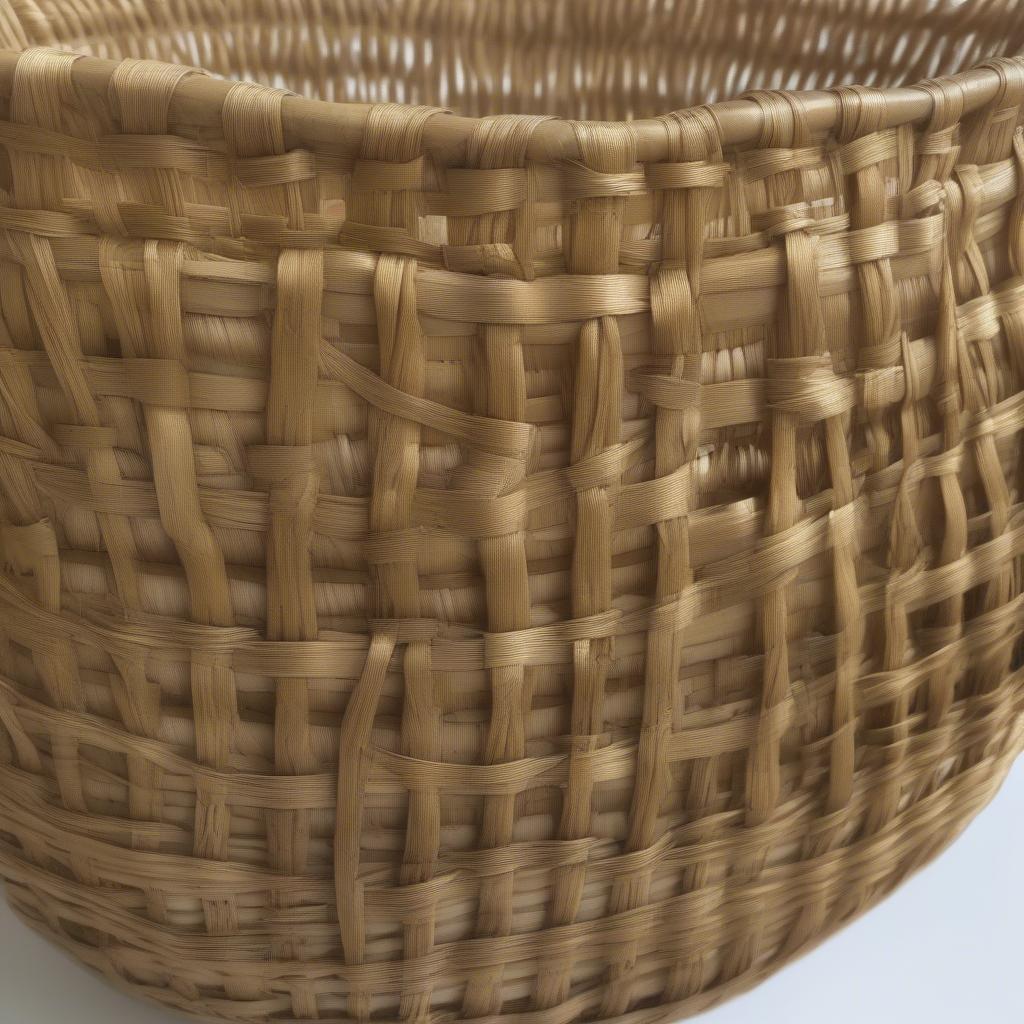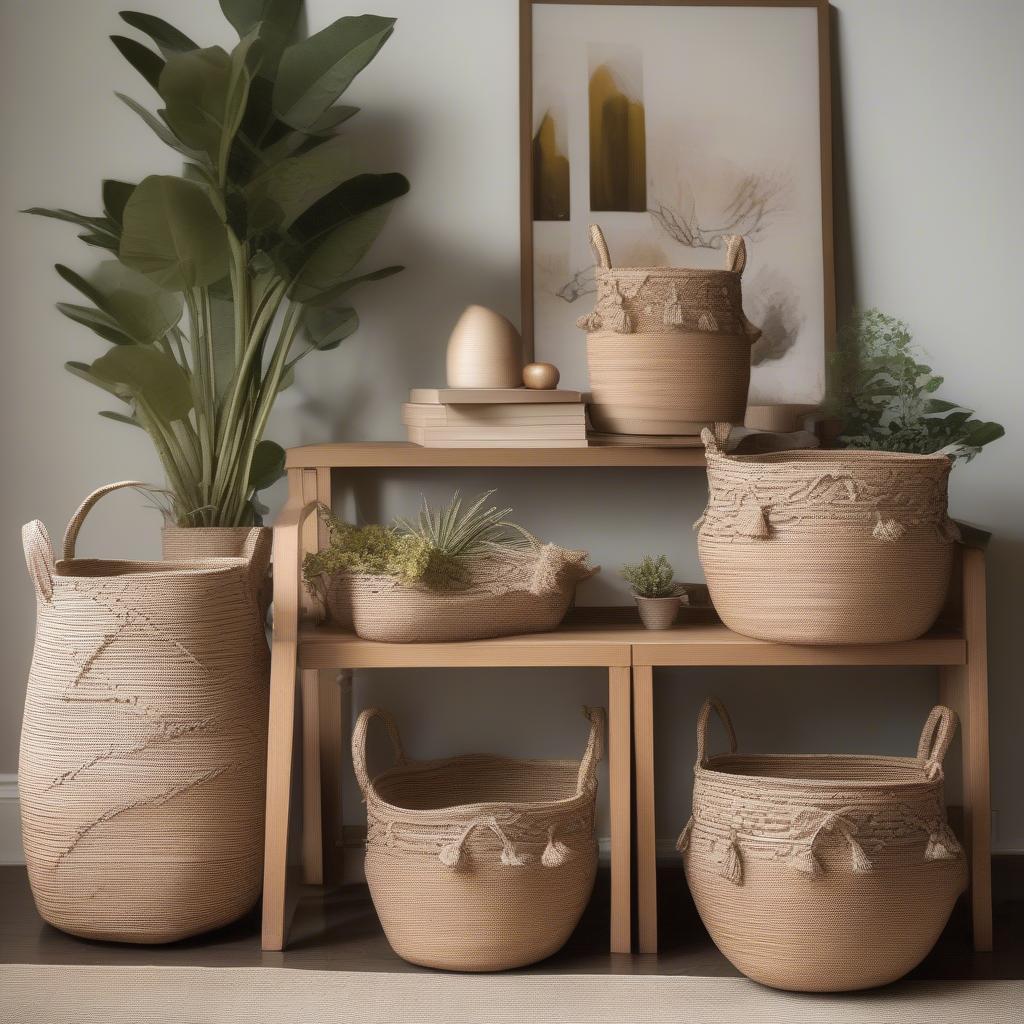Basket Weaving
What Are Those Weaved Baskets Sold by Whole Foods?
Whole Foods Market often features a beautiful array of woven baskets, perfect for everything from produce displays to home decor. But what are they exactly, and what makes them so special? This article delves into the world of these handcrafted baskets, exploring their materials, origins, and the artistry behind their creation. We’ll uncover the differences between wicker, rattan, seagrass, and other natural fibers used in these exquisite pieces, helping you appreciate the craftsmanship and choose the perfect basket for your needs.
Decoding the Weave: Materials and Origins of Whole Foods Baskets
The woven baskets found at Whole Foods are typically made from natural, sustainable materials, reflecting the store’s commitment to eco-friendly products. These materials offer a unique blend of durability, beauty, and environmental responsibility. Let’s examine some of the most common materials:
- Rattan: A strong, flexible vine native to Southeast Asia, rattan is a popular choice for basket weaving. Its natural resilience and ability to be bent and shaped make it ideal for intricate designs. Whole Foods often features rattan baskets in various sizes and shapes, from small produce baskets to large storage containers.
- Wicker: Often confused with rattan, wicker isn’t a material itself, but a weaving technique. Wicker baskets can be made from various materials, including rattan, willow, bamboo, and even synthetic fibers. At Whole Foods, you’ll likely find wicker baskets made from natural materials, showcasing the beauty of the woven craft.
- Seagrass: A durable and sustainable material harvested from coastal regions, seagrass offers a unique texture and aesthetic appeal. Its natural golden hue and resistance to moisture make it perfect for baskets used in kitchens and bathrooms. Whole Foods often stocks seagrass baskets for storage and display.
- Banana Leaf: Another eco-friendly option, banana leaf fiber is derived from the banana plant after the fruit has been harvested. These fibers are woven into beautiful and lightweight baskets, often with intricate patterns. Look for these unique and sustainable baskets in the Whole Foods produce section.
 Rattan Baskets at Whole Foods
Rattan Baskets at Whole Foods
Why Choose Handwoven Baskets? The Benefits of Artisanal Craftsmanship
Beyond their aesthetic appeal, handwoven baskets offer a range of benefits:
- Sustainability: Made from renewable resources, these baskets are an eco-conscious choice, aligning with Whole Foods’ commitment to sustainability.
- Durability: Natural fibers like rattan and seagrass are incredibly strong and durable, ensuring your baskets last for years.
- Versatility: From storing produce to organizing household items, woven baskets add a touch of natural beauty and functionality to any space.
- Supporting Artisans: Purchasing handwoven baskets supports the skilled craftspeople who create these unique pieces, preserving traditional techniques.
Where are these baskets made?
The baskets sold at Whole Foods are often sourced from various countries known for their basket weaving traditions. These may include:
- Southeast Asia: Countries like the Philippines, Indonesia, and Vietnam are major producers of rattan and other natural fibers used in basket weaving.
- Africa: Many African nations have rich traditions of basketry, using materials like grasses, reeds, and palm leaves.
- South America: Indigenous communities in South America create beautiful baskets using local materials and traditional techniques.
 Handwoven Seagrass Basket
Handwoven Seagrass Basket
Are Whole Foods Baskets Fair Trade?
Whole Foods Market strives to source products ethically and responsibly, often partnering with suppliers who adhere to fair trade principles. While not all baskets may carry a specific fair trade certification, the store’s commitment to responsible sourcing suggests a focus on fair labor practices and sustainable production.
Caring for Your Woven Baskets
To keep your baskets looking their best, follow these simple care tips:
- Dust Regularly: Use a soft cloth or brush to remove dust and debris.
- Clean Spills Immediately: Wipe up spills with a damp cloth and allow to air dry thoroughly.
- Avoid Direct Sunlight: Prolonged exposure to sunlight can fade the natural colors of the fibers.
- Store in a Dry Place: Moisture can damage natural fibers, so store your baskets in a dry, well-ventilated area.
 Woven Baskets in Home Decor
Woven Baskets in Home Decor
In conclusion, the weaved baskets sold by Whole Foods offer a beautiful and sustainable way to bring natural textures and artisanal craftsmanship into your home. From rattan and wicker to seagrass and banana leaf, these handcrafted pieces add functionality and style while supporting ethical sourcing and sustainable practices. By understanding the materials, origins, and care instructions, you can appreciate the artistry and choose the perfect basket to meet your needs.
FAQ
- Are all Whole Foods baskets handmade? While the majority are handcrafted, some may be machine-made. Check the product description for details.
- Can I use these baskets outdoors? While some materials are more weather-resistant, it’s best to avoid prolonged exposure to the elements.
- Are these baskets ethically sourced? Whole Foods prioritizes responsible sourcing, often working with suppliers who adhere to fair trade principles.
- How do I clean a stained basket? Try a gentle cleaning solution with a soft brush, then rinse and air dry thoroughly.
- What sizes are available? Whole Foods offers a wide range of sizes, from small produce baskets to large storage containers.
- Where can I find these baskets in the store? Look for them in the produce section, home goods aisle, or seasonal displays.
- Can I order these baskets online? Check the Whole Foods website for online availability.
We encourage you to explore our other articles on basket weaving, sustainable living, and artisanal crafts. Need further assistance? Contact us at Hanoi, Vietnam or Tech Avenue, Suite 12, San Francisco, CA 94105, USA. Our customer service team is available 24/7.
